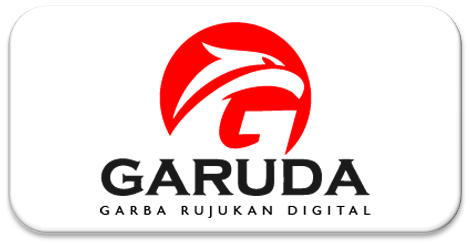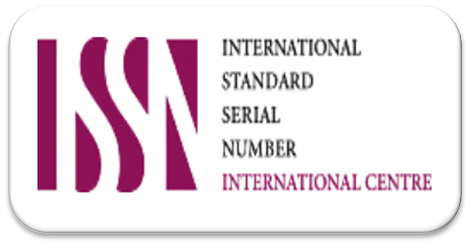Pengaruh Daya Tarik Fisik terhadap Diskriminasi Pekerjaan di Industri Perhotelan dan Pariwisata Jakarta
Physical Attractiveness on Job Discrimination in Jakarta's Hospitality and Tourism Industry
DOI:
https://doi.org/10.22373/jsai.v4i3.3451Keywords:
Beauty, Physical Attractiveness, DiscriminationAbstract
This study aims to explore how standards of beauty and physical attractiveness influence job opportunities in the hospitality and tourism industries, particularly in the context of discrimination occurring in the initial stages of the job market, as reflected in job vacancy announcements. Utilising a reflective digital sociology approach, an analysis was conducted on job listings from the jobstreet.co.id portal, focusing on the hospitality and tourism sectors. The findings indicate that skills such as communication abilities, a good personality, and physical attractiveness often emerge as primary factors in the selection process. Notably, an attractive appearance is frequently considered an essential qualification and indicates a tendency towards discrimination at the initial stage of recruitment. This study finds that physical attractiveness is not only valued but also acts as a discriminatory factor, limiting job opportunities for those who do not meet subjective standards of beauty. These findings affirm that individuals with physical attractiveness are more likely to succeed in the hospitality and tourism industries compared to those who are less physically attractive.
Abstrak
Artikel ini bertujuan untuk mengeksplorasi bagaimana standar kecantikan dan daya tarik fisik mempengaruhi peluang kerja di industri perhotelan dan pariwisata, khususnya terkait dengan diskriminasi dalam tahapan awal proses rekrutmen, seperti yang tercermin dalam pengumuman lowongan kerja. Menggunakan pendekatan sosiologi digital reflektif, analisis dilakukan terhadap data lowongan pekerjaan dari portal jobstreet.co.id, dengan fokus pada sektor perhotelan dan pariwisata. Hasil penelitian menunjukkan bahwa kemampuan komunikasi, kepribadian yang baik, dan daya tarik fisik sering kali menjadi faktor utama dalam proses seleksi. Penampilan yang menarik, khususnya, sering kali dianggap sebagai kualifikasi penting dan mengindikasikan adanya kecenderungan diskriminatif pada fase awal rekrutmen. Temuan ini menemukan bahwa daya tarik fisik tidak hanya dihargai tetapi juga berperan sebagai faktor diskriminatif, membatasi kesempatan kerja bagi mereka yang tidak memenuhi standar kecantikan subjektif. Hal ini menegaskan bahwa individu dengan daya tarik fisik cenderung memiliki peluang yang lebih besar untuk sukses dalam industri perhotelan dan pariwisata dibandingkan mereka yang tidak menarik secara fisik.
References
Becker, Gary S. 2010. The economics of discrimination. Vol. 23. Chicago: University of Chicago Press.
Benzeval, M., M.J. Green, and S Macintyre. 2013. “Does perceived physical attractiveness in adolescence predict better socioeconomic position in adulthood? Evidence from 20 years of follow up in a population cohort study.” PLoS One 8 (5).
Beytía, Pablo, and Hans-Peter Müller. 2022. “Towards a Digital Reflexive Sociology: Using Wikipedia's Biographical Repository as a Reflexive Tool.” Poetics 95.
Biddle, J.E., and D.S Hamermesh. 1995. Beauty, Productivity and Discrimination: Lawyers’ Looks and Lucre (No. w5366). National Bureau of Economic Research.
Bóo, F.L., M.A. Rossi, and S.S Urzua. 2013. “The labor market return to an attractive face: evidence from a field experiment.” Econ. Lett. 118 (1): 170-172.
Bourdieu, P. 1986. “he Forms of Capital.” In Handbook of theory and research for the sociology of education, edited by J. G. Richardson, 241-258. New York: Greenwood Press.
Busetta, Giovanni, Fabio Fiorillo, and Giulio Palomba. 2021. “The impact of attractiveness on job opportunities in Italy: a gender field experiment.” Economia Politica 38: 171-201.
Busetta, Giovanni, Maria Gabriella Campolo, and Demetrio Panarello. 2020. “Weight-Based Discrimination in the Italian Labor Market: an Analysis of the Interaction with Gender and Ethnicity.” Journal of Economic Inequality 18 (4): 617-637.
Caliendo, M., and M Gehrsitz. 2016. “Obesity and the labor market: a fresh look at the weight penalty.” Econ. Hum. Biol. 23: 209-225.
Chiang, C.I., and Y.L. Saw. 2018. “Do good looks matter when applying for jobs in the hospitality industry?” International Journal of Hospitality Management 71: 33-40.
Ellis, Lee, Anthony W. Hoskin, and David P. Farrington. 2019. The Handbook of Crime Correlates. Second Edition. Academic Press.
Feingold, A. 1988. “Matching for attractiveness in romantic partners and same-sex friends: a meta-analysis and theoretical critique.” Psychol. Bull 104: 226-235.
Fletcher, J.M. 2009. “Beauty vs. brains: early labor market outcomes of high school graduates.” Econ. Lett. 105 (3): 321-325.
Frieze, I.H., Olson, J.E., Russell, J. 1991. “Attractiveness and income for men and women in management.” J. Appl. Soc. Psychol 21 (13): 1039–1057.
Galper, R.E., and E Weiss. 1975. “Attribution of behavioral intentions to obese and normal weight stimulus persons.” Eur. J. Soc. Psychol 5 (4): 425-440.
Hamermesh, D.S. 2011. Beauty Pays: Why Attractive People Are More Successful. Princeton: University Press.
Hosoda, M., E.F. Stone-Romero, and G Coats. 2003. “The effects of physical attractiveness on job-related outcomes: a meta-analysis of experimental studies.” Pers. Psychol 56 (2): 431-462.
katadata.co.id. 2022. Platform Lowongan Kerja Paling Banyak Digunakan Masyarakat (2022). Accessed June 10, 2023. https://databoks.katadata.co.id/datapublish/2022/09/07/6-platform-lowongan-kerja-paling-banyak-digunakan-di-indonesia.
Larkin, J.C., and H.A Pines. 1979. “No fat persons need apply: experimental studies of the overweight stereotype and hiring preference.” Sociol. Work Occup 6 (3): 312-327.
Lokadata.id. 2020. Orang Indonesia Dan Jerat Standar Penampilan. Jakarta, April 28. Accessed November 11, 2023. https://www.myhokkie.com/blog/orang-indonesia-dan-jerat-standar-penampilan/.
Morrow, P.C., J.C. McElroy, B.G. Stamper, and M.A. Wilson. 1990. “The effects of physical attractiveness and other demographic characteristics on promotion decisions.” J. Manage 16 (4): 723-736.
O’Connor, Kathleen M., and Eric Gladstone. 2018. “Beauty and social capital: Being attractive shapes social networks.” Social Networks 52: 42-47.
Rennels, J.L. 2012. Encyclopedia of Body Image and Human Appearance. Las Vegas: University of Nevada.
Singh, D. 2004. “ Mating strategies of young women: Role of physical attractiveness.” Journal of Sex Research 41 (1): 43-54.
Singh, D., and D Singh. 2011. “ Shape and significance of feminine beauty: An evolutionary perspective.” Sex Roles 64 (9/10): 723-731.
Webster, M., and J. E Driskell. 1983. “Beauty as status.” The American Journal of Sociolog 89 (1): 140-165. doi:https://doi.org/10.1086/227836.
Yonce, Kelsey P. 2014. Attractiveness privilege : the unearned advantages of physical. Northampton, MA: Smith College.
Downloads
Published
How to Cite
Issue
Section
License
- Authors retain copyright and grant the journal right of first publication with the work simultaneously licensed under an Attribution-NonCommercial-ShareAlike 4.0 International (CC BY-NC-SA 4.0) that allows others to share the work with an acknowledgment of the work's authorship and initial publication in this journal.
- Authors are able to enter into separate, additional contractual arrangements for the non-exclusive distribution of the journal's published version of the work (e.g., post it to an institutional repository or publish it in a book), with an acknowledgment of its initial publication in this journal.
- Authors are permitted and encouraged to post their work online (e.g., in institutional repositories or on their website) prior to and during the submission process, as it can lead to productive exchanges, as well as earlier and greater citation of published work.













